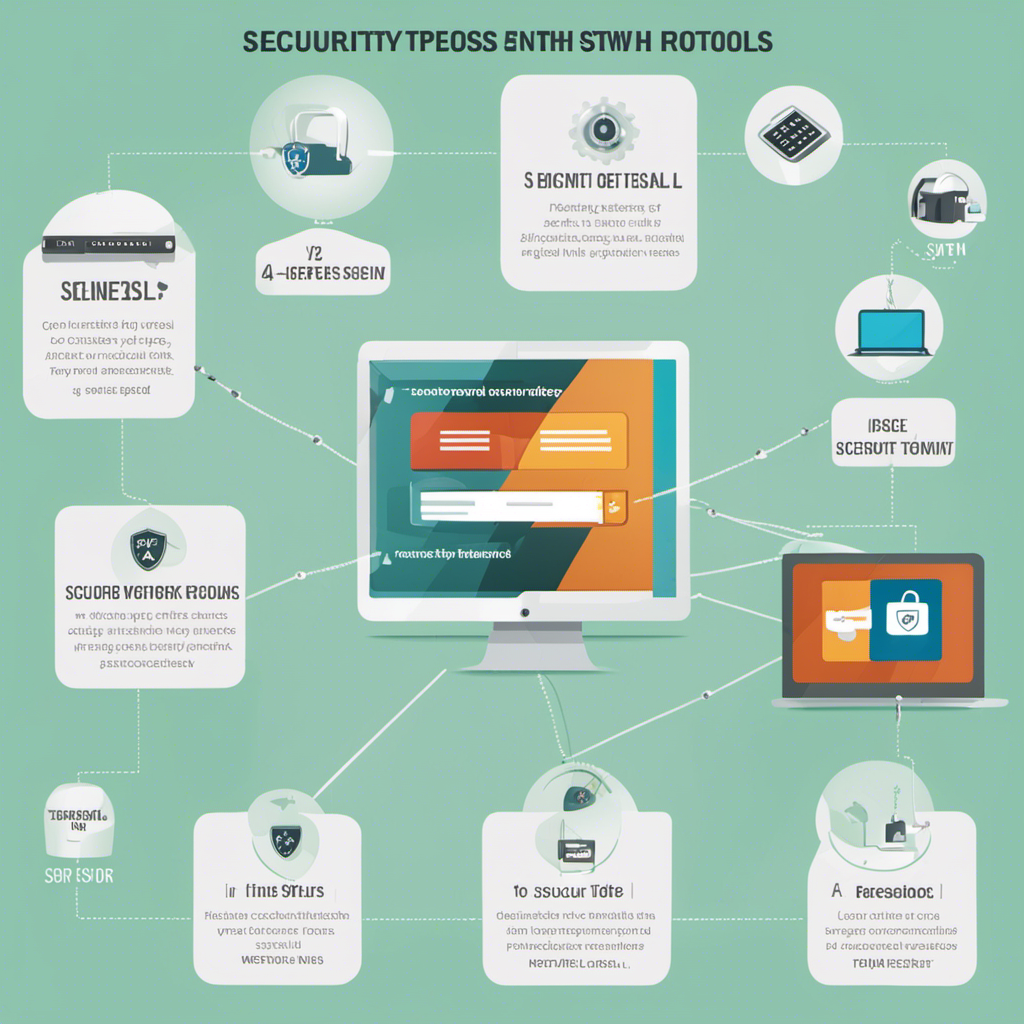Living in an increasingly digital world, we encounter a myriad of security threats on a daily basis. From computer viruses to hacking attempts, the digital landscape is constantly changing with emerging threats. This harsh reality underscores the crucial importance of understanding digital security protocols, tools that play a major role in securing your online interactions and maintaining your digital integrity.
Bringing these abstract concepts to light, this blog article aims to dissect and demystify different security protocols. Providing a comprehensive guide, we’ll delve into their mechanisms and unpack how they contribute to your overall digital security. Equip yourself with knowledge as your first line of defense, ultimately strengthening your fortress in the digital world.
What Are Security Protocols?
Security protocols are an integral part of our digital world. They serve as rules or standards designed specifically to protect the integrity, confidentiality, and authenticity of data while in transit across networks. These protocols are founded on the principles of cryptography, employing a range of techniques to ensure the safety of data exchanges.
One of the cornerstones of security protocol functionality is encryption. This process involves transforming the data into a ciphertext or code that can only be deciphered by authorized individuals. This ensures that even if the data is intercepted during transmission, it remains secure from unauthorized access.
The process of authentication is another vital element of security protocols. This helps in establishing the identity of the users involved, preventing unauthorized users from accessing the data. This could be achieved through methods like passwords, biometric scans, or multi-factor authentication mechanisms.
Digital signatures and secure hashing also contribute significantly to the robustness of security protocols. A digital signature brings in an additional layer of verification, affirming the identity of the sender. On the other hand, secure hashing creates a unique ‘hash’ for every set of data, ensuring that even the slightest modification can be immediately detected. For a deeper dive into cryptography and related techniques, one might visit the comprehensive resource provided by CSO Online.

How Do Security Protocols Work?
The process of security protocols involves various milestones, each integral to ensuring secure communication. This journey begins with initialization, a critical step responsible for setting up the communication channel between the involved parties.
The next crucial step is mutual authentication. This process validates the identities of the parties involved in the communication. The goal is to combat impersonation attempts or fraudulent activities where an entity might try to masquerade as one of the parties. Such a step is crucial to set a trusted environment before data exchange.
The communication procedure then transitions to the equally important step of key exchange. Herein, the communicating entities securely share a symmetric key which will be used subsequently for data encryption and decryption, thus ensuring any intercepted communication remains unintelligible without the correct key.
Following the secure exchange of keys, comes the phase of data transmission. Here, the data is encrypted before being sent across to the receiving party. This encrypted data maintains its secure form until it reaches its destination, where it is decrypted and made readable using the earlier exchanged key. The final, yet indispensable checkpoint, is to ensure the integrity of the received data. This is to ensure that the decrypted data matches the original information which was transmitted, hence confirming that there has been no alteration or corruption during transmission. Combining all these steps, the working of security protocols ensures a safe and trustworthy conversation between communicating parties.
Types of Security Protocols
The world of cybersecurity is populated with several types of security protocols, each operating uniquely to ensure safe data transmission. One such security protocol is the Secure Sockets Layer, commonly referred to as SSL. SSL protocols ensure secure communication over a network by encrypting the links between a web server and a browser, making the transmitted data unreadable to anyone who might intercept it.
Alongside SSL, there’s another largely implemented protocol known as Transport Layer Security (TLS). TLS, often used interchangeably with SSL, provides privacy and data integrity between computer applications. It uses encryption to secure connection, preventing unauthorized entities from altering or reading transmitted data. You can read more about TLS on the Wikipedia page.
Another security protocol is the Secure Shell (SSH). SSH is used in remote management of systems, providing a secure channel in an insecure network environment. It guarantees multiple layers of security during data transmission. Another noteworthy protocol is Internet Protocol Security (IPsec). IPsec provides secure communication sessions across an IP network by authenticating and encrypting each IP packet of a communication session. It offers essential security at the network level.
Last but not least, Hyper Text Transfer Protocol Secure (HTTPS) is widely used in the World Wide Web. HTTPS, an extension of the HTTP, uses SSL/TLS protocol to safeguard data communication. It ensures a secure and private browsing experience, making it a crucial protocol for websites that handle sensitive user data. Its usage is widespread across e-commerce sites, banks, and more.

Why Are Security Protocols Important?
In the modern era where everything is increasingly interconnected via the internet, the role of security protocols is absolutely critical. Their primary purpose is to shield your data from unauthorized access and alteration, thereby maintaining the privacy of individuals online. They function as digital bodyguards protecting your personal as well as sensitive data from malevolence.
Moreover, the value of security protocols extends to the realm of e-commerce and online transactions. With the proliferation of online shopping, digital payments, and internet banking, it has become crucially important to ensure the safety and security of these transactions. This is where security protocols come into play, securing payment information while it’s transmitted across the web. They assure the users that their financial transactions are safe and that they can trust the online platforms with their credit card information.
Apart from the above-mentioned scenarios, security protocols also vouchsafe the integrity of digital communication. In our data-driven world, millions of digital communication instances occur every second. Be it an email, a video call, a financial transaction, or any form of digital data exchange. Security protocols vet every piece of data transferred on the internet, safeguarding it from malicious threats and ensuring that the data reaches its intended destination without being tampered with.
In essence, security protocols act as the unsung heroes of the internet, constantly working in the background to keep our digital lives secure and private. They ensure that the internet remains a safe haven for individuals and businesses alike, multiplying trust in online transactions and digital communication. To learn more about the different security protocols, you might want to visit this article from TechTarget, but always remember to treat any information shared online with amply skepticism and protect your data as if it were gold.
Conclusion: The Imperative of Understanding Security Protocols
In our digital-centric world, the understanding of security protocols is of paramount importance to every individual. Security protocols come into play whenever we perform simple actions like signing in to our email or making an online transaction. They are the invisible guards that protect our sensitive information against unauthorized access. Understanding these protocols puts you in a better position to fortify your cybersecurity position, safeguarding your personal data.
Apart from personal protection, having an awareness of how security protocols function underpins a safer digital environment for everyone. It discourages hazardous practices such as sharing sensitive information over unprotected networks or clicking on suspicious links, thereby reducing the overall risk of cyber threats.
Simply stated, fostering a society that understands digital security protocols contributes to a healthy cyber ecosystem. It is also a baby step that every individual can take towards promoting a safe digital world, where everyone can leverage technology without the fear of cyber theft or a data breach.
